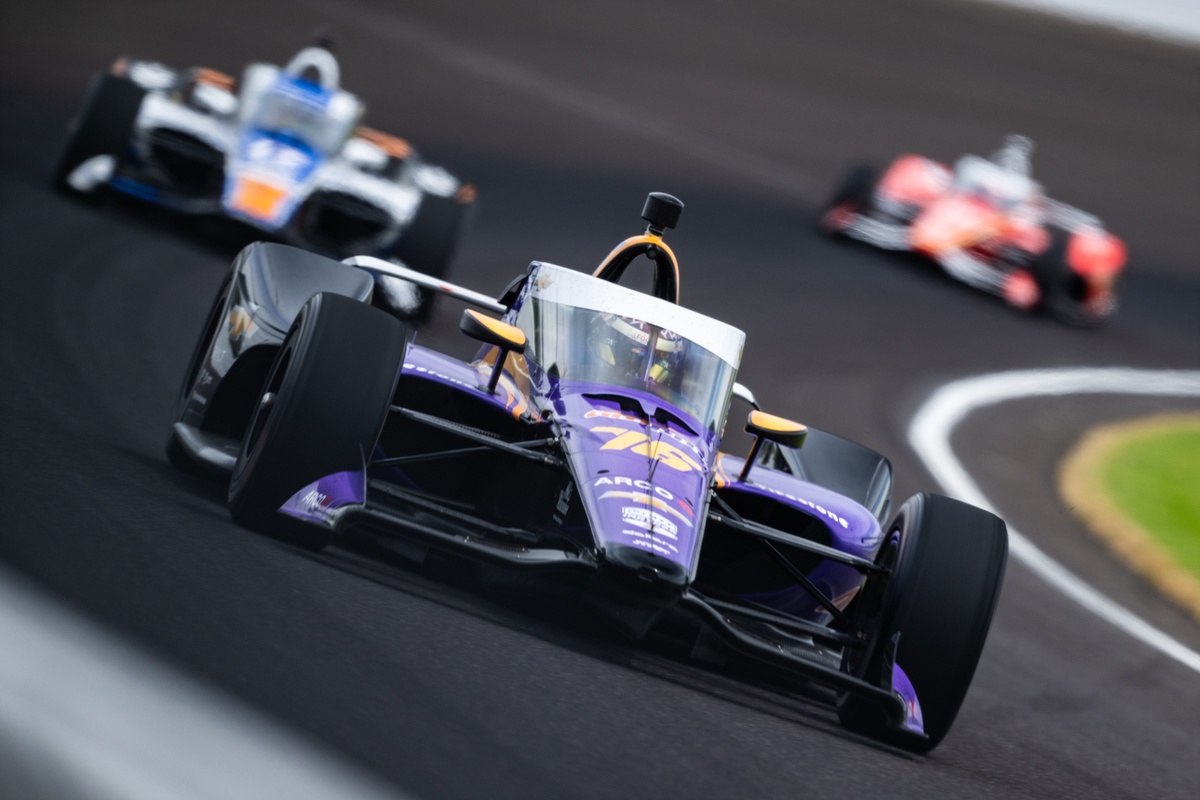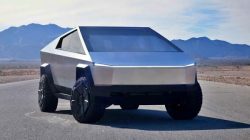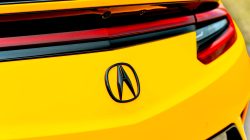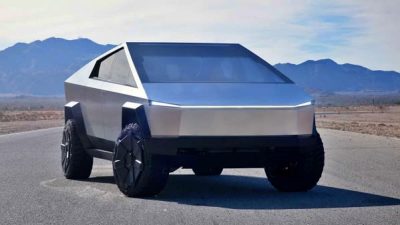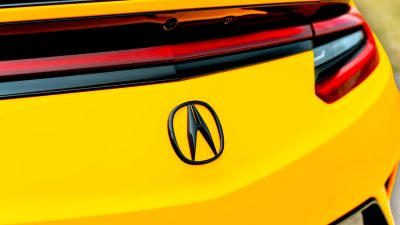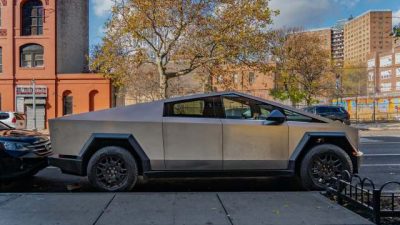The 33 cars
that will take part in the biggest spectacle in racing this Sunday
They have already spent numerous hours working in garages and at the Indianapolis Motor Speedway aiming to claim the title of Indy 500 champion. However, what specific criteria does a technical director consider when configuring a vehicle to achieve optimal performance on this distinctive 2.5-mile circular track?
I sat down with David Brown, who became part of Juncos Hollinger Racing in December, to grasp how an IndyCar team manages the Month of May and what it takes to handle a vehicle racing at nearly 240 mph. The drivers representing Juncos are
Conor Daly
and
Sting Ray Robb
.
Brown boasts extensive motorsport expertise, accumulating almost 15 years at the pinnacle of racing with Williams. During his tenure there, he contributed to Nigel Mansell’s and Alain Prost’s World Championship campaigns as an engineer. Additionally, Brown gained further experience working with both McLaren and Jordan.
Nevertheless, he is captivated by the Indianapolis 500. “As you delve deeper into it, you start to comprehend why individuals get hooked on the Indy 500,” Brown explains.
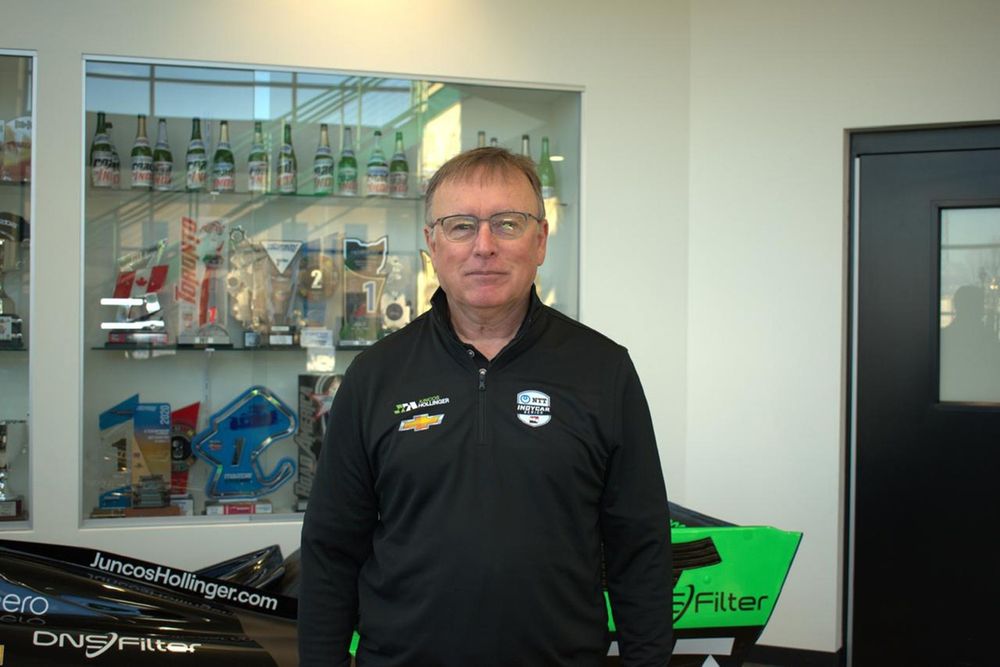
David Brown, from Juncos Hollinger Racing
Image courtesy of: Juncos Hollinger Racing
Technically speaking, what requirements must a car meet to achieve high speeds at the Indianapolis 500?
It’s a balancing act among aerodynamic resistance, stability, and effectiveness. From an outsider’s perspective, it might seem simple—just aim for minimal wings and reduced drag. However, this approach won’t work since it would make cornering painfully slow. Despite appearing swift through turns, lifting off could cost valuable speed and require maintaining higher RPMs. Thus, numerous small factors converge to determine the car’s total performance. Low drag is desirable, yet you must also consider downforce, necessitating efficient design—a blend of both elements. Additionally, maximizing power is crucial as our Chevrolet engine provides substantial benefits.
But you must also transfer that power to the road efficiently, requiring an effective transmission system. This adds yet another element to consider. Additionally, maintaining full throttle is crucial for achieving adequate downforce. Thus, you aim to optimize both your engine’s performance and your transmission efficiency.
And when you’re stuck in traffic, selecting the right gear becomes crucial. Everyone tends to use fourth, fifth, and sixth gears interchangeably due to their proximity. For instance, during practice laps with another car leading, using sixth gear works fine. However, within dense traffic conditions, switching quickly to fourth gear may become necessary even though the gap between cars is tiny; this shift would barely register visually. Noticeable only as slight movement of the driver’s hand and a subtle alteration in engine sound—this indicates an adjustment of about 70 RPMs has been achieved simply through altering your gear.
So all these minute details become clear, and that’s what contributes to achieving the lap time. Essentially, pit stops play an essential role here. The vehicle needs tires positioned precisely so they can rub against the oval track surface during high-deceleration braking when entering the pit lane, despite the outer part of the tire being entirely cold.
blah, blah, blah, blah
And the vehicle has a weight jack feature, where most of the weight is distributed to one side of the car. This often leads to drivers experiencing wheel lock-ups and similar issues when they brake in the pit lane.
The concept is that making errors with incorrect brake bias and improper jack positions upon entering the pit lane could lead to significant issues. Besides causing skidding and alarming those in adjacent pits, this might result in an accident within the pitlane itself, potentially jeopardizing your entire race. There are numerous small but crucial factors involved here; assembling them correctly presents quite a captivating challenge.
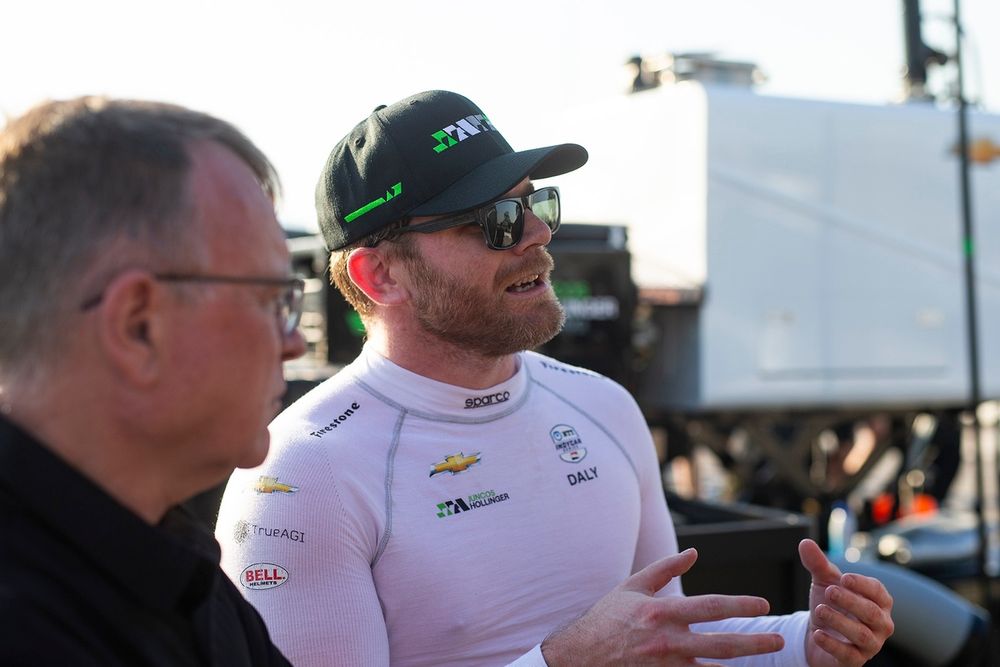
Conor Daly, competing for Juncos Hollinger Racing
Photograph by: Action Sports Photography
It’s evident how enthusiastic you are about this. Obviously, you possess considerable experience with various types of motor racing, particularly Formula 1. Could you draw some comparisons between the Indianapolis 500 and all the other races in your career?
It really depends on the person. It’s quite distinctive. For instance, I’ve participated in events such as Le Mans and Monaco along with Daytona and every race in between—those lengthy competitions—and spent two decades in Formula 1 too. So, it feels akin to viewing someone’s face through a screen; sure, you can identify them, yet things aren’t precisely identical. Hence, once engaged, one needs to recalibrate their perspective.
And I became part of this competition roughly two decades back, though merely at the fringes. Yet, it provided me with considerable insight. However, it remains incredibly captivating. I frequently discuss race engineering as well as car racing. Think about individuals juggling flaming batons; imagine one person darting from one baton to another, managing up to twenty simultaneously. They’re constantly moving, ensuring none falls. Essentially, your role mirrors this scenario—you must keep all those batons aloft.
With so many days dedicated to practicing, there’s an abundance of data to sift through. What methods does Juncos Racing use to manage this extensive amount of information?
It’s intriguing that you bring this up since theoretically, we have ample time available. However, practically speaking, we push ourselves to the limit during each practice session due to the difficulties of securing a good qualifying position and the significance of doing well in qualifying. Additionally, the setup of the vehicle needs to be quite distinct for qualifying purposes.
We essentially have two distinct segments: one for race preparation and another for qualifying. The cars themselves are largely identical, yet their aerodynamic setups and performance parameters differ significantly when focused on qualifying. Additionally, they receive an increased power output; everyone receives this added boost during qualifications along with everything else involved. Upon arrival, we come equipped after running numerous simulations.
We took part in the Open Test, lasting for two days. Upon arrival, we had an understanding of the obstacles ahead. Just as with any challenge in life, we prepared a list of items we wished to address and sought answers for them. We began with the highest priority issues and gradually moved toward those considered less critical.
Sure enough, it’s rarely as simple and clear-cut as one might wish. Additional elements invariably emerge. Sometimes you discover insights that steer you towards a somewhat altered path benefiting you, or you find out what doesn’t work effectively, forcing you to take an alternative approach for compensation.
And indeed, there’s quite an extensive amount of data. Each vehicle has three engineers dedicated to it. Additionally, two more senior engineers—myself included along with Will (Phillips)—who oversees the other car, also contribute their expertise. Being part of a GM engine unit means we receive considerable backing from General Motors; thus, their engineers also analyze this data. Consequently, when managing both vehicles, not counting our own team members, there could be around 10 or 11 individuals scrutinizing the information generated—a substantial number considering how copious the data can become.
How do you allocate your practice time between qualifying sessions and the actual race?
We practiced on Tuesday, Wednesday, and Thursday, so that adds up to about three days dedicated to racing practice. Additionally, we spent roughly one-third of a day doing solo runs aimed at refining our qualifying technique. The day prior to qualifications focused solely on preparation for those crucial sessions. Qualifying took place next, where unfortunately, we fell short of securing a spot in the top 12 by merely 0.06 miles per hour—a minuscule difference. This highlights how tight the competition is in IndyCar events held at Indianapolis.
We didn’t require further track activity over the weekend since then. However, as scheduled, we now have two hours of additional practice set for today (the 19th). Following this, Carb Day will be conducted on Friday with several more hours allocated for final preparations. After these activities conclude, only the main event remains; surprisingly swift considering all the preceding efforts.
Despite the brief length of the circuit, the conditions vary continuously. This includes factors like wind, temperature, air pressure, and humidity, each affecting performance differently. Any shift in the wind requires us to adjust the downforce levels, while variations in temperature necessitate altering the wing settings as compensation.
Once you’ve gone through all those details, you feel like you’re constantly rushing around. Today, our focus will be on longer runs—about 30 laps each—to assess tire wear, overall performance, and handling as the fuel level drops and tires deteriorate, similar to what happens during a real race. However, by the time Carbs Day arrives, significant adjustments become challenging because most things have been set up. On Carbs Day, we mainly check everything thoroughly, ensuring minor fine-tuning of performance. Yet, today holds considerable importance; despite being limited to just two hours, expect intense activity.
What distinguishes a car’s configuration during qualifying from its settings during an actual race?
For our team, the focus has primarily been on aerodynamics. While some others have implemented various mechanical modifications, if you have a vehicle that performs well mechanically, then you should be able to test different aerodynamic setups without affecting its overall performance. Therefore, we believe our car offers comfort to the drivers. We’ve concentrated mostly on adjusting the aerodynamics with minimal alterations to the mechanics.
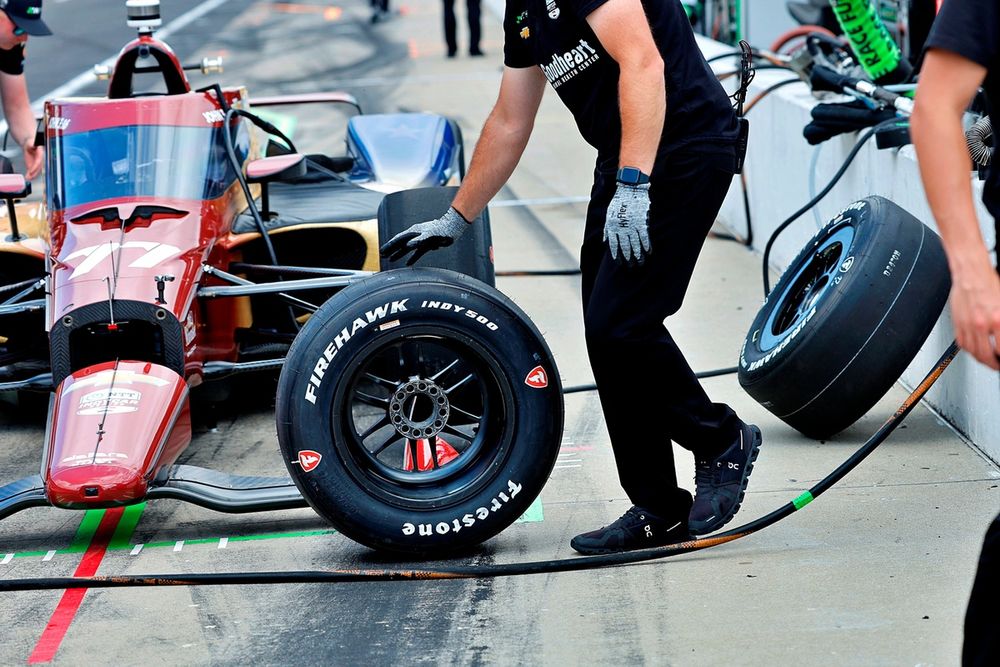
Sting Ray Robb with Juncos Hollinger Racing
Photo by: Penske Entertainment
How simple is it to slip off the windowsill when making a minor adjustment to the setup?
Absolutely straightforward. Yes. Whenever we implement modifications, we assess the state of the vehicle prior to making changes and do so afterward as well. This applies even when adjustments are minor; for instance, altering the front wing angle in the pits requires immediate measurement both before and after, despite having just completed the adjustment minutes earlier. Thus, following each alteration, another round of measurements ensues. For example, recently, we adjusted the wing angle by merely 0.15 degrees—a truly insane level of precision—but due to the immense impact these minute variations have at speeds around 230 mph where aerodynamic forces become colossal, any discrepancy gets significantly amplified.
It’s amusing that you brought this up since I also recall Conor Daily mentioning that he felt off with the car during the Open Test. He expressed discomfort and noted that adjustments were made to the front wing. Even though it was supposedly the same part, it seemed to alter the overall handling of the vehicle entirely. This just highlights how delicate and precise these setups can be.
Yes, ultimately, we had to test the wings directly on the vehicle to ensure everything was functioning correctly since modeling these conditions proved challenging. The assumption is that each wing should be identical; however, this isn’t accurate as every single wing varies. We conduct static evaluations of stiffness and durability through vertical and torsional measurements similar to standard practices. Additionally, further assessments are performed. When choosing wings from inventory—whereby each car has both a main and backup option—we also take them out onto the circuit for final verification. As mentioned earlier, even minor discrepancies can lead to significant issues throughout an extended testing period.
Which tool is the most important for adjusting the car setup in the Indy 500? Can you pick just one, or is that not possible?
The great aspect about racing cars is how similar they are to molecular models; each component interacts with others much like interconnected spheres. Thus, altering even a single element within the vehicle’s configuration will inevitably affect another area. This interconnectivity is precisely what makes these vehicles intriguing yet challenging when trying to determine which factor has the most influence.
It might seem evident that aerodynamics play a crucial role, and indeed they do. However, the mechanical aspects are equally vital since adjustments made here directly impact ride height, which in turn influences aerodynamic performance. Everything is intertwined—changing wing settings often goes hand-in-hand with modifying suspension configurations too. Some teams opt for varying wheelbase lengths based on race conditions during qualification rounds, resulting in significant modifications. Yet, we prefer maintaining our current design philosophy, focusing instead on tweaking only certain parts.
In recent years, Juncos has fielded quick vehicles at the Indy 500, yet their drivers have lacked significant experience for this particular race. To what extent did Conor’s familiarity with the IMS alter the performance of the car?
I believe that one aspect Conor contributes due to his extensive background is that after driving the car, he’ll return and share specific feedback such as ‘This is how I want the car to handle’ or conversely, ‘This isn’t how I’d prefer the car to behave.’ While it might be suitable for just one lap, under racing conditions with heavy traffic, issues arise and the handling becomes overly sensitive. His insights often include statements like, ‘Based on my experience, during the actual race, the car’s behavior will likely align with scenario X—either positively or negatively.’ This input significantly benefits our team and provides a substantial competitive edge.
For the first time this year at the Indy 500, you’ve got the hybrid unit. Did you find it challenging to get used to it?
Yes, I believe both us and the majority of others have had sufficient practice with it to understand our approach during the race. During qualifications, various strategies were employed; however, this won’t be applicable for the actual race as the hybrid system will be utilized quite differently due to the entirely distinct conditions encountered then. Yet, since most participants have used it extensively, they’ve gained insight into proper usage. Therefore, essentially, it’s merely an additional element to incorporate into the overall strategy.
Could this potentially serve as a crucial element in determining the outcome of the competition?
Well, I’m confident that if you make a mistake, everyone will be affected because they all have this too. It’s similar to increasing engine size; when everyone upgrades, speeds rise across the board. However, mistakes can happen. If someone messes up or fails to push the correct button at the appropriate moment, it could impact performance. Yet, should every single person perform flawlessly, nothing would alter. This principle obviously extends to various scenarios such as pit stops and more.

